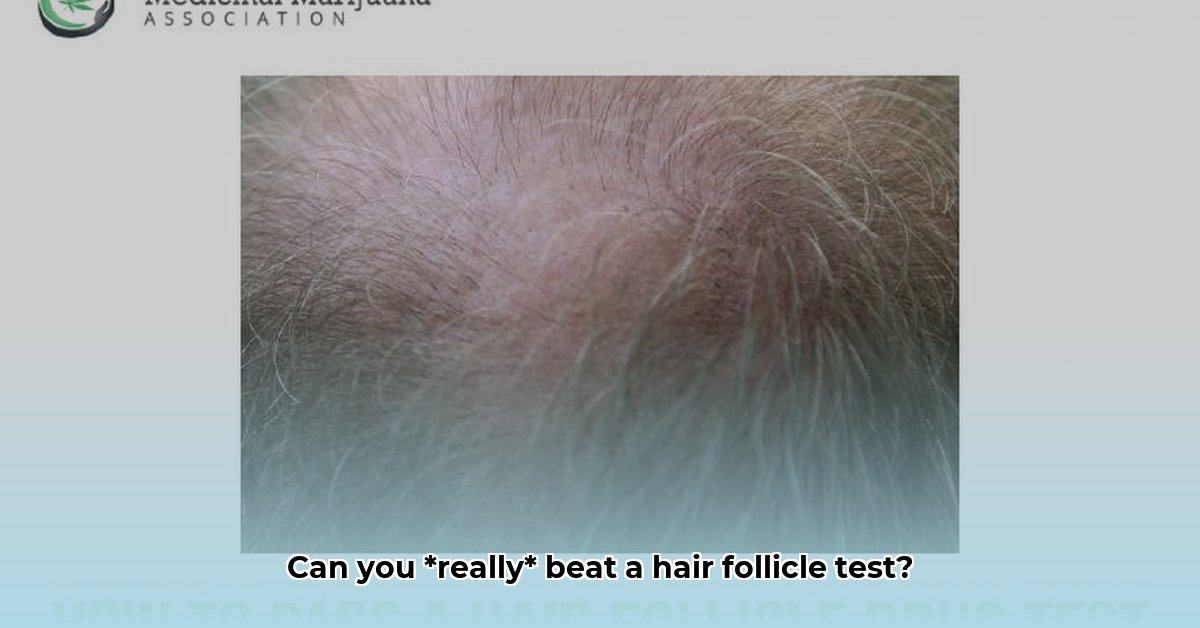So, you’re facing a hair follicle drug test. You’re likely anxious and searching for a guaranteed way to pass. The internet offers countless “solutions,” but how much of it is true? This guide provides clear, factual information about hair follicle testing, debunks common myths, and explores realistic options.
Understanding Hair Follicle Drug Tests
Let’s cut through the noise and get to the facts. Hair follicle tests are notoriously difficult to “beat.” Here’s why:
The Science: Why These Tests Are So Effective
Drugs and their metabolites enter your bloodstream and are incorporated into your hair as it grows. Each centimeter of hair reflects roughly one month of history, making these tests effective for detecting drug use over an extended period (typically 90 days). This makes abstinence the only guaranteed way to pass.
What Drugs Are Tested For and How Long Do They Remain Detectable?
Hair follicle tests can detect a variety of substances, including:
| Drug Category | Examples | Typical Detection Window |
|---|---|---|
| Cocaine | Cocaine | Up to 90 days |
| Marijuana | THC | Up to 90 days |
| Opioids | Fentanyl, Heroin, Codeine, etc. | Up to 90 days |
| Amphetamines | Methamphetamine, Adderall, Vyvanse | Up to 90 days |
| PCP | PCP | Up to 90 days |
| Benzodiazepines | Xanax, Valium, Klonopin, etc. | Up to 90 days |
| MDMA | Ecstasy, Molly | Up to 90 days |
Note: Alcohol is not detectable in hair follicle tests.
While 90 days is the general timeframe, several factors can influence detection time, including individual hair growth rates, frequency of drug use, metabolism, and the specific testing methods used by the lab. Segmental analysis, which examines different sections of the hair, can provide a more detailed timeline of drug use.
Debunking the Myths: Why Quick Fixes Don’t Work
Numerous myths and misconceptions surround hair follicle drug testing. Let’s address them directly:
Myth 1: Special Shampoos or Home Remedies
Shampoos, vinegar rinses, and other home remedies may affect the hair’s surface, but they cannot remove metabolites embedded within the hair shaft.
Myth 2: Shaving Your Head
Body hair (from legs, arms, underarms, etc.) can be used for testing. Shaving your head only delays the inevitable.
Myth 3: Hair Treatments (Dyeing, Bleaching, Perming)
These treatments might slightly reduce metabolite concentrations but won’t eliminate them. They may also raise suspicion at the lab.
Myth 4: Secondhand Smoke
While extremely high levels of secondhand smoke might theoretically lead to a positive result, it’s improbable under normal circumstances.
Myth 5: Tests Go Back Years
Standard tests typically cover 90 days. Longer detection windows are possible with longer hair samples but less common.
Navigating the Legal Landscape
Drug testing regulations are complex and constantly evolving.
Federal vs. State Laws
Federal guidelines for hair follicle testing are currently delayed until May 2025. This delay creates ambiguity, emphasizing the importance of understanding your state’s specific laws.
Example: California’s Cannabis Law
California recently enacted legislation protecting employees from discrimination based on off-duty cannabis use (with some job-specific exceptions). This highlights the evolving legal landscape and the need for up-to-date information.
Know Your Rights
If you’re facing a drug test, consult with a legal professional to understand your rights and options. They can advise you on the specifics of your situation and any legal protections you may have.
Managing Your Situation: Realistic Strategies
While abstinence is the only guaranteed way to pass a hair follicle test, understanding the science, debunking the myths, and being aware of your legal rights are crucial. Consider these steps:
- Seek Legal Counsel: An attorney can clarify your rights and help you navigate the legal complexities of drug testing.
- Be Honest with Yourself: Evaluate your drug use history realistically. Understanding the detection window can help you anticipate potential outcomes.
- Seek Support: If you’re struggling with substance use, numerous resources are available to help. Don’t hesitate to reach out for assistance.
The Importance of Accurate Information
This guide aims to provide accurate, up-to-date information. However, research on drug testing is ongoing. Always consult with qualified professionals for personalized guidance. Remember, making informed decisions is essential for navigating this complex issue.
- The Best Bento Box Price For Your Perfect Packed Lunch - December 15, 2025
- Bento Box Shopping Tips for Smart and Stylish Lunch Prep - December 14, 2025
- Bento Box Trays Streamline Restaurant Meal Presentation and Transport - December 13, 2025










